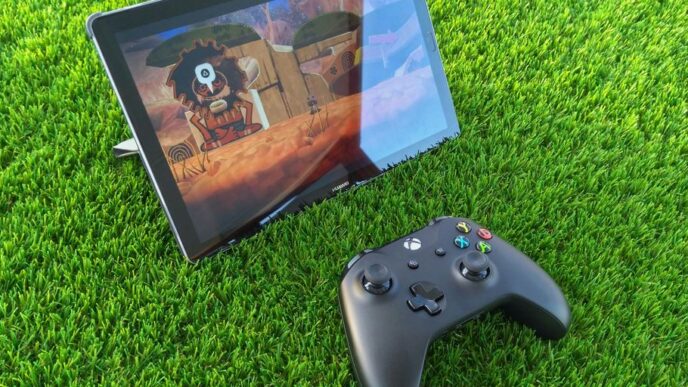Backing up your Android phone is crucial to protect your important data. Whether it’s photos, contacts, or apps, having a backup ensures you won’t lose anything important if your phone gets lost or damaged. This guide will walk you through various methods to back up your device effectively.
Key Takeaways
- Always back up important data to avoid losing it.
- Use Google services for easy backups of your photos and files.
- Consider third-party apps for more comprehensive backup options.
- Regularly check and update your backups to ensure they are current.
- Set up automatic backups to save time and hassle.
Why You Should Back Up Your Android Phone
Backing up your Android phone is very important. Losing your data can be a nightmare! Here are some reasons why you should back up your phone:
Protecting Your Data from Loss
- Accidental deletion of files
- Phone theft or loss
- Damage from water or drops
Ensuring Smooth Device Transitions
- Easy transfer to a new phone
- Restoring data after a factory reset
- Keeping your settings and preferences intact
Safeguarding Against Malware and Viruses
- Protecting your personal information
- Avoiding data loss from malicious attacks
- Keeping your files safe from corruption
Regular backups can save you from losing important memories and files. Don’t wait until it’s too late!
Using Google Services to Back Up Your Android Phone
Backing up your Android phone is simple with Google services. Here’s how you can do it:
Setting Up Google Backup
- Open the Settings app on your phone.
- Tap on Google.
- Select Backup and toggle on Backup by Google One.
- To start backing up immediately, tap Back up now.
Backing Up Photos and Videos with Google Photos
- Install the Google Photos app if it’s not already on your device.
- Open the app and log into your Google account.
- Tap on your profile picture in the top right corner.
- Select Turn on backup to start saving your photos and videos.
- Enable Backup & Sync in the settings for automatic backups.
Restoring Data from Google Backup
When setting up a new device, you can restore your data easily:
- During the setup process, choose to restore from your Google backup.
- Follow the prompts to select what data you want to restore.
Remember: Regular backups can save you from losing important files and memories.
Using Google services ensures that your data is safe and accessible from anywhere. Make sure to check your backup settings regularly!
Backing Up Your Android Phone to a PC
Backing up your Android phone to a PC is a smart way to keep your data safe. This method allows you to store important files securely on your computer. Here’s how you can do it:
Using a USB Cable for Backup
- Connect your phone to the PC using a USB cable.
- On your phone, swipe down to see notifications and tap on "Charging This Device via USB."
- Choose "Transfer Files" from the options.
- On your PC, a pop-up will appear. Click on "Open Device to View Files."
- You can now copy and paste files from your phone to your PC.
Transferring Files to a Mac
- Download the Android File Transfer app on your Mac.
- Connect your phone to the Mac using a USB cable.
- Open the app and select the files you want to back up.
- Drag the files to your Mac to save them.
Using Acronis True Image for Full Backup
- Install Acronis True Image on your PC.
- Connect your phone to the PC.
- Open Acronis and select the option to back up your Android device.
- Follow the prompts to complete the backup process.
Remember, keeping your data backed up is essential to avoid losing important information. Regular backups can save you a lot of trouble in case of device failure or loss.
| Method | Pros | Cons |
|---|---|---|
| USB Cable | Fast transfer speeds | Requires a cable |
| Android File Transfer (Mac) | Easy to use | Needs installation |
| Acronis True Image | Full device backup | May require purchase |
Third-Party Apps for Backing Up Your Android Phone
Backing up your Android phone is crucial, and using third-party apps can make this process easier and more efficient. Here are some popular options:
Super Backup & Restore
- Features: This app allows you to back up individual items like apps, contacts, SMS, and calendars.
- User-Friendly: You can choose where to save your backups, making it easy to find them later.
- Automatic Backups: Schedule backups to run automatically, so you never forget.
Helium Backup
- No Root Required: Helium allows you to back up your apps and data without needing root access.
- Cloud Support: You can back up to cloud services like Google Drive or Dropbox.
- Easy Restore: Restoring your data is straightforward and quick.
Titanium Backup for Rooted Devices
- Advanced Features: This app is for users with rooted devices and offers extensive backup options.
- Batch Backup: You can back up multiple apps and their data at once.
- System App Backup: It allows you to back up system apps, which is useful for advanced users.
| App Name | Root Required | Cloud Backup | Automatic Backup |
|---|---|---|---|
| Super Backup & Restore | No | Yes | Yes |
| Helium Backup | No | Yes | Yes |
| Titanium Backup | Yes | No | Yes |
Remember: Always check the app’s permissions and reviews before downloading to ensure your data is safe. Using these apps can help you keep your data secure and easily recoverable in case of loss or damage.
Backing Up Specific Data Types on Your Android Phone

Backing up your Android phone is essential to keep your important information safe. Here’s how to back up specific types of data:
Contacts and Calendars
- Sync with Google: Make sure your contacts and calendars are synced with your Google account. This way, they are automatically backed up.
- Export Contacts: You can also export your contacts to a .vcf file for extra safety.
- Check Sync Settings: Go to Settings > Accounts > Google and ensure that Contacts and Calendar are checked.
Messages and Call Logs
- Use Google Messages: If you use Google Messages, your texts can be backed up automatically.
- Third-Party Apps: Consider apps like SMS Backup & Restore for more options.
- Export Call Logs: Some apps allow you to export your call logs to a file.
Apps and App Data
- Google Play Services: Many apps automatically back up their data to Google Drive.
- Manual Backup: For apps that don’t support this, check if they have a built-in backup option.
- Use Titanium Backup: If your device is rooted, Titanium Backup can back up all your apps and their data.
Remember: Regularly backing up your data can save you from losing important information in case of device failure or loss.
By following these steps, you can ensure that your contacts, messages, and apps are safely backed up, giving you peace of mind.
Cloud Storage Options for Android Backup
Backing up your Android phone to the cloud is a smart way to keep your data safe. Here are some popular options:
Using Google Drive
Google Drive is a great choice for backing up files. It’s easy to use and integrates well with Android. Here’s how to store your files:
- Open Google Drive.
- Tap the New button.
- Select Upload.
- Choose the files you want to back up.
- Done!
Backing Up with OneDrive
OneDrive is another solid option, especially if you use Microsoft products. If you have an Office 365 subscription, you get 1TB of storage. Here’s how to back up:
- Download the OneDrive app.
- Sign in with your Microsoft account.
- Upload your files directly from your phone.
Amazon Photos for Media Backup
If you take a lot of pictures, Amazon Photos offers unlimited photo storage with a Prime subscription. You also get 5GB for videos. Here’s how to use it:
- Install the Amazon Photos app.
- Sign in with your Amazon account.
- Enable auto-upload for your photos and videos.
| Service | Free Storage | Paid Plans |
|---|---|---|
| Google Drive | 15 GB | 100 GB for $1.99/month |
| OneDrive | 5 GB | 1 TB with Office 365 |
| Amazon Photos | Unlimited | 100 GB for $2/month |
Cloud storage is a cost-effective solution for keeping your data safe and accessible. It’s perfect for anyone who wants to avoid losing important files.
Choose the service that fits your needs best, and make sure to back up your data regularly!
Automating Your Android Phone Backup

Setting Up Automatic Backups
To make sure your data is always safe, you can set up automatic backups on your Android phone. Here’s how:
- Go to Settings on your phone.
- Tap on Google.
- Select Backup and turn on Back up to Google Drive.
- Choose what you want to back up, like app data, call history, and more.
This way, your data will be backed up automatically!
Scheduling Regular Backups
You can also schedule regular backups to ensure your data is always up to date. Here’s a simple way to do it:
- Open the Google Drive app.
- Tap on the Menu icon.
- Select Settings and then Backup.
- Choose how often you want backups to occur (daily, weekly, etc.).
Ensuring Backup Completeness
To make sure your backups are complete, follow these steps:
- Check the Backup status in the Google Drive app.
- Make sure all important data types are selected for backup.
- Regularly review your backup settings to ensure everything is up to date.
Remember: Regular backups can save you from losing important files in case of device failure or loss.
By automating your backups, you can enjoy peace of mind knowing your data is safe without having to think about it constantly!
Restoring Your Android Phone from a Backup
Restoring your Android phone from a backup is a straightforward process that can save you time and effort. Follow these steps to ensure a smooth restoration.
Initial Setup and Data Restoration
- Turn on your device and follow the on-screen instructions.
- When prompted, select "Restore from backup" during the setup process.
- Choose the backup you want to restore from, whether it’s from Google or another source.
Restoring Specific Data Types
- Contacts and Calendars: These are usually restored automatically if you use Google services.
- Photos and Videos: If you backed up using Google Photos, simply log in to your account to access your media.
- Apps and App Data: Most apps will reinstall automatically, but you may need to log in again.
Troubleshooting Restoration Issues
- If you encounter problems, try the following:
- Ensure you have a stable internet connection.
- Check if your backup is complete and accessible.
- Restart your device and attempt the restoration again.
Remember, keeping your backups updated is crucial. Regularly check your backup settings to avoid losing important data.
By following these steps, you can easily restore your Android phone and get back to using it without missing a beat!
Best Practices for Maintaining Android Backups
Following the 3-2-1 Backup Rule
To keep your data safe, follow the 3-2-1 backup rule. This means:
- Keep three copies of your data.
- Store two copies on different devices (like your phone and a PC).
- Keep one copy in the cloud.
Regularly Updating Your Backups
Make sure to update your backups regularly. Set a reminder to back up your data at least once a month. This helps ensure that you don’t lose any recent files or important information.
Verifying Backup Integrity
After backing up, always check that your files are safe and accessible. You can do this by:
- Opening a few files from your backup.
- Checking the backup size to ensure it matches your original data.
- Making sure your backup app shows no errors.
Remember: Regular backups can save you from losing important data due to unexpected issues.
Summary Table of Backup Methods
| Method | Frequency | Pros | Cons |
|---|---|---|---|
| Google Drive | Monthly | Easy to use | Limited free storage |
| External Hard Drive | Monthly | Large storage capacity | Can be lost or damaged |
| Cloud Services | Weekly | Accessible anywhere | Requires internet access |
Using Syncthing for Continuous Backup
Setting Up Syncthing on Android
To start using Syncthing for backing up your Android phone, follow these steps:
- Install the Syncthing app from the Google Play Store.
- Install Syncthing on your PC or Mac.
- Set up Syncthing on both devices by following the on-screen instructions.
- Create a connection between your Android device and your computer by selecting Add Remote Device on your PC.
- On your Android phone, open Syncthing and tap the three-line menu button, then select Show device ID.
- Enter the device ID on your computer, name the device, and hit Save.
- On your PC, go to the Syncthing app, click on Actions, and choose Show ID.
- On your phone, tap the Devices tab, select the + icon, enter the Device ID from your computer, and tap the checkmark.
- Go back to the Folders tab on your phone, select the folder you want to share or create a new one, and move files to it. Toggle on your PC for syncing.
- On your Windows Syncthing app, you should see a request to sync the folder. Select Add and hit Save.
- Your folder will now sync, and you can access your files on your computer anytime!
Connecting Syncthing to Your PC
Once you have set up Syncthing on both devices, you can easily manage your backups. Here’s how:
- Ensure both devices are connected to the same network.
- Check the status of your sync in the Syncthing app.
- You can add more folders to sync by repeating the steps above.
Managing Syncthing Backup Folders
To keep your backups organized:
- Regularly check the sync status to ensure everything is up to date.
- You can create multiple folders for different types of data, like photos, documents, and more.
- Make sure to monitor your storage space on both devices to avoid running out of space.
Using Syncthing is a great way to ensure your files are continuously backed up without needing to connect your phone to a computer every time.
Preparing Your Android Phone for Backup
Before you start backing up your Android phone, there are a few important steps to follow. Getting ready is key to ensure a smooth backup process.
Installing Necessary Drivers
- First, you need to install the right drivers for your Android phone on your PC. This helps your computer recognize your phone.
- You can find these drivers on your phone manufacturer’s website or download them directly.
- Make sure to follow the installation instructions carefully.
Enabling USB Debugging
- To enable USB debugging, follow these steps:
- Open the Settings app on your phone.
- Scroll down and tap on About Phone.
- Find the Build Number and tap it seven times to unlock developer options.
- Go back to Settings, tap on System, then Developer Options.
- Turn on USB Debugging.
Ensuring Sufficient Storage Space
- Check that your phone has enough storage space for the backup. You can do this by:
- Going to Settings > Storage.
- Deleting any unnecessary files or apps to free up space.
Tip: Regularly check your storage to avoid running out of space during backups.
By following these steps, you can prepare your Android phone for a successful backup. This will help protect your data and make the process easier.
Understanding the Limitations of Android Backups
Backing up your Android phone is important, but there are some limitations you should know about. Understanding these can help you make better choices when it comes to protecting your data.
Storage Limitations
- Cloud storage often has limits. For example, Google Drive offers 15 GB for free, but you may need to pay for more.
- Local storage on your device can fill up quickly, especially with photos and videos.
- Some backup apps may have their own limits on how much data you can store.
Data Encryption and Security
- Backups are usually encrypted, but this can vary by service. Not all services offer the same level of security.
- If you lose access to your Google account, you may lose your backups.
- Some data, like app data, may not be fully encrypted, making it vulnerable.
Compatibility Issues
- Restoring backups may not work if you switch to a different brand of phone.
- Some apps may not restore properly, especially if they have been updated.
- Older Android versions may not support newer backup features, leading to potential data loss.
Always check the backup options available for your specific device and service. This will help you avoid losing important data in the future.
In summary, while backing up your Android phone is essential, be aware of these limitations to ensure your data is safe and accessible when you need it.
Final Thoughts on Backing Up Your Android Phone
Backing up your Android phone is a smart move that can save you a lot of trouble. By following the steps we discussed, you can keep your important files safe from loss or damage. Whether you choose to use Google services, third-party apps, or your computer, the key is to find a method that works best for you. Remember, it’s always better to be safe than sorry when it comes to your data. So, take a few minutes to back up your phone today, and you’ll have peace of mind knowing your memories and important information are secure.













